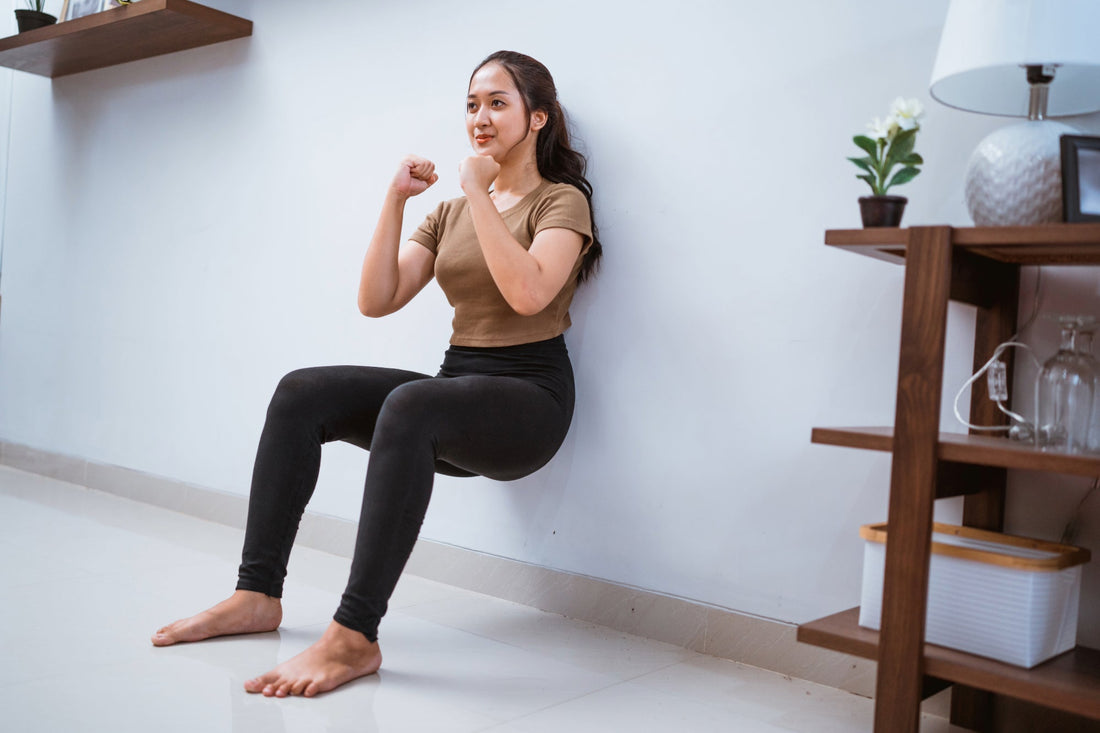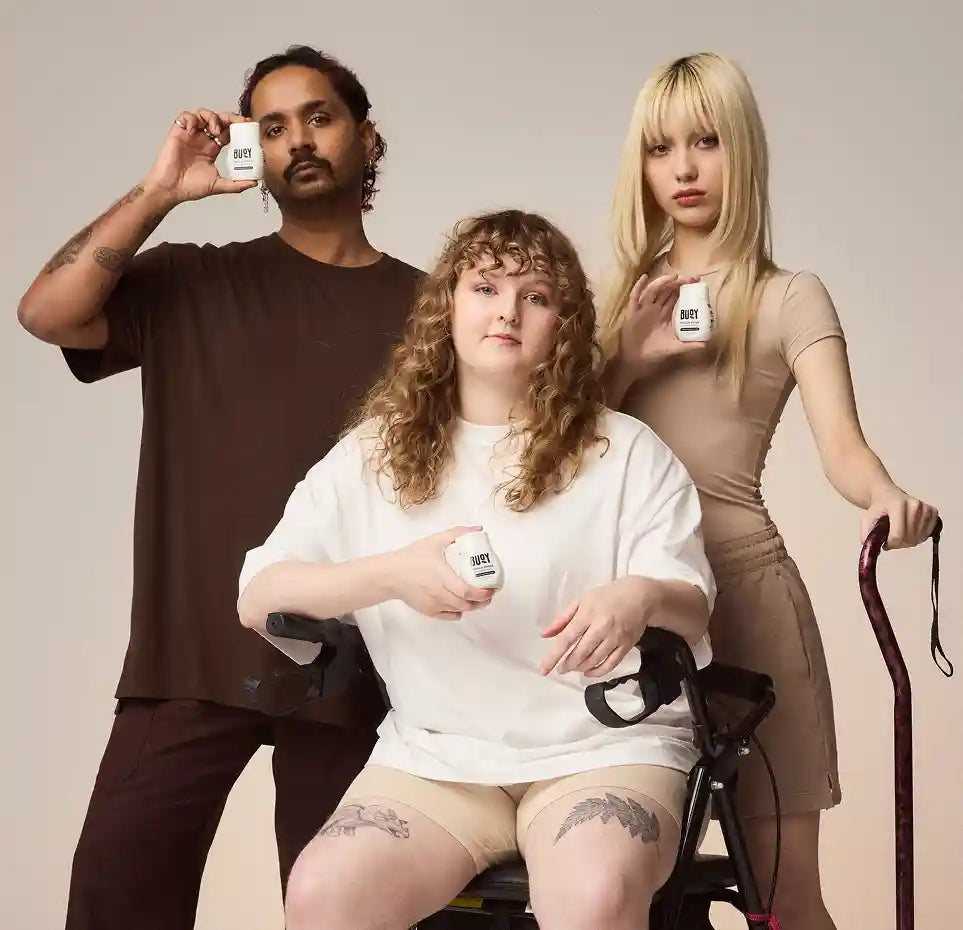
Postural Training for POTS: Techniques to Support Autonomic Balance
Living with Postural Orthostatic Tachycardia Syndrome (POTS) often means finding effective ways to manage dizziness, fatigue, and other challenging symptoms. One often-overlooked strategy is postural training—a practical approach that supports balance, improves circulation, and enhances autonomic function.
By integrating postural training into your daily routine, you can take significant steps toward reducing symptoms and improving your quality of life.
Essential Takeaways:
- Positional Changes Can Trigger POTS Symptoms: For individuals with POTS, transitioning from lying to sitting or standing can strain the autonomic nervous system, leading to dizziness, fatigue, and difficulty maintaining balance.
- How Postural Training Can Help: Targeted exercises like supine-to-sitting transitions, wall sits, and core strengthening can improve circulation, enhance blood flow, and help manage POTS symptoms, making daily activities more manageable.
In this guide, we’ll explore the best postural training techniques to help you feel more stable, energized, and in control.
- Why Postural Training Is Important for POTS
- Effective Postural Exercises for POTS Patients
- Incorporating Postural Training Into Daily Life
- Tracking Progress and Adjusting Techniques
- Taking Control of POTS with Postural Training
Why Postural Training Is Important for POTS
For POTS patients, managing positional changes and maintaining good circulation are key challenges. When standing or sitting for long periods, blood tends to pool in the lower extremities, reducing blood flow to the brain and causing dizziness, fatigue, and even fainting.
Postural training focuses on improving muscle tone, circulation, and spinal alignment, helping to combat these effects.¹ ² Since every POTS patient may experience different symptoms, learn more in our In-Depth POTS Symptom Guide.
The Role of Postural Training in Autonomic Balance
Postural training offers multiple benefits for POTS patients by addressing the root causes of symptoms like dizziness and fatigue. Here’s how these autonomic balance techniques can make a difference:
- Reduces Blood Pooling: Strengthening the muscles in the legs and core helps pump blood back to the heart and brain more efficiently.
- Improves Circulation: Specific exercises encourage better blood flow and reduce orthostatic intolerance.
- Supports Nervous System Regulation: Posture plays a vital role in autonomic nervous system balance, making it easier to transition from sitting to standing without triggering symptoms.²
By incorporating posture training for POTS into your routine, you can better manage POTS symptoms and gain greater control over your body’s response to positional changes.
Effective Postural Exercises for POTS Patients
Not all exercises are suitable for POTS patients, but gentle, targeted movements can significantly help improve circulation and balance. Below are some POTS posture exercises to try.
1. Wall Sits
How to Do It:
Stand with your back flat against a wall, slide down until your knees are at a 90-degree angle, and hold the position for 10–30 seconds.
Why It Helps:
Strengthens leg muscles, encouraging blood flow, reducing pooling, and managing dizziness in POTS.
2. Seated Toe Raises
How to Do It:
While seated, lift your toes off the ground and lower them back down repeatedly for 1–2 minutes.
Why It Helps:
Activates the calf muscles to promote circulation.
3. Supine-to-Sitting Transitions
How to Do It:
Start by lying flat on your back, then slowly transition to a seated position, pausing if you feel dizzy. Repeat 3–5 times.
Why It Helps:
Gradually acclimates the body to positional changes, reducing orthostatic intolerance.
4. Gentle Core-Strengthening Exercises
Examples include:
-
Bridges:
Lie on your back with knees bent, feet flat on the floor, and lift your hips toward the ceiling.
-
Pelvic Tilts:
Lie on your back and gently tilt your pelvis upward and downward.
Why They Help:
A strong core supports spinal alignment, improves balance, and facilitates better blood circulation.
Incorporating these gentle exercises into your routine can help improve circulation, ease orthostatic intolerance, and support overall balance. Remember to start slow, listen to your body, and adjust as needed.
With consistency, these targeted movements can make a significant difference in managing your POTS symptoms and improving your daily quality of life.² ³ Discover more about exercising in our guide to POTS and Exercise Intolerance.

Incorporating Postural Training Into Daily Life
Making postural training part of your daily routine doesn’t have to be complicated. Small, consistent changes can lead to significant improvements over time. Here’s how to do it:
- Practice Good Posture: Sit with your back straight, shoulders relaxed, and feet flat on the floor. When standing, distribute your weight evenly across both feet and engage your core.
- Use a Timer for Posture Checks: Set a reminder every hour to check your posture, especially during long periods of sitting or standing.
- Incorporate Light Stretches During Breaks: Stretch your neck, shoulders, and back during work or study breaks to reduce tension and improve circulation
- Combine Training With Hydration: Hydrate with water and electrolytes before and after exercise sessions to maintain blood volume and reduce dizziness.
By making these adjustments, you can build a habit of postural awareness and gradually strengthen your body’s ability to handle positional changes.
Tracking Progress and Adjusting Techniques
Monitoring your progress is key to maximizing the benefits of postural training. Keep a journal or use an app to track improvements in symptoms such as dizziness, fatigue, or energy levels. Here are some tips to ensure you stay on track:
- Start Slow: Begin with just a few exercises and gradually increase the duration or intensity as your body adapts.
- Adjust Based on Symptoms: If an exercise feels too challenging or worsens your symptoms, modify or pause it until you’re ready to try again.
- Work With a Specialist: A physical therapist or POTS specialist can provide personalized guidance and create a tailored postural training program for your needs. Learn more with our guide to safe workouts: Exercise and Physical Therapy for POTS.
Regularly reviewing your progress with POTS posture exercises allows you to refine your routine and ensure it remains effective over time.
Taking Control of POTS with Postural Training
Managing POTS requires a multifaceted approach, and postural training can be a powerful tool in your toolkit. By incorporating targeted exercises into your routine, you can improve circulation, reduce dizziness, and support autonomic balance.
Creating Your POTS Treatment Plan
Pair these Postural Training POTS techniques with proper hydration and guidance from your healthcare team to create a personalized plan that works for you. With consistent effort and the right strategies, you can take control of your POTS symptoms and improve your quality of life.
Ready to Learn More?
Explore our comprehensive POTS resource guides for expert tips on managing your symptoms and living well with POTS.

References:
-
Cleveland Clinic. (2022). Postural Orthostatic Tachycardia Syndrome (POTS). Retrieved from https://my.clevelandclinic.org/health/diseases/16560-postural-orthostatic-tachycardia-syndrome-pots
-
Fu Q., Levine B. D. (2015). Exercise in the Postural Orthostatic Tachycardia Syndrome. Auton Neurosci: Basic & Clinical,188:86-89. Retrieved from https://pmc.ncbi.nlm.nih.gov/articles/PMC4336603/
- Self. (2024). How to Safely Exercise With POTS, According to Experts. Retrieved from https://www.self.com/story/how-to-exercise-with-pots





